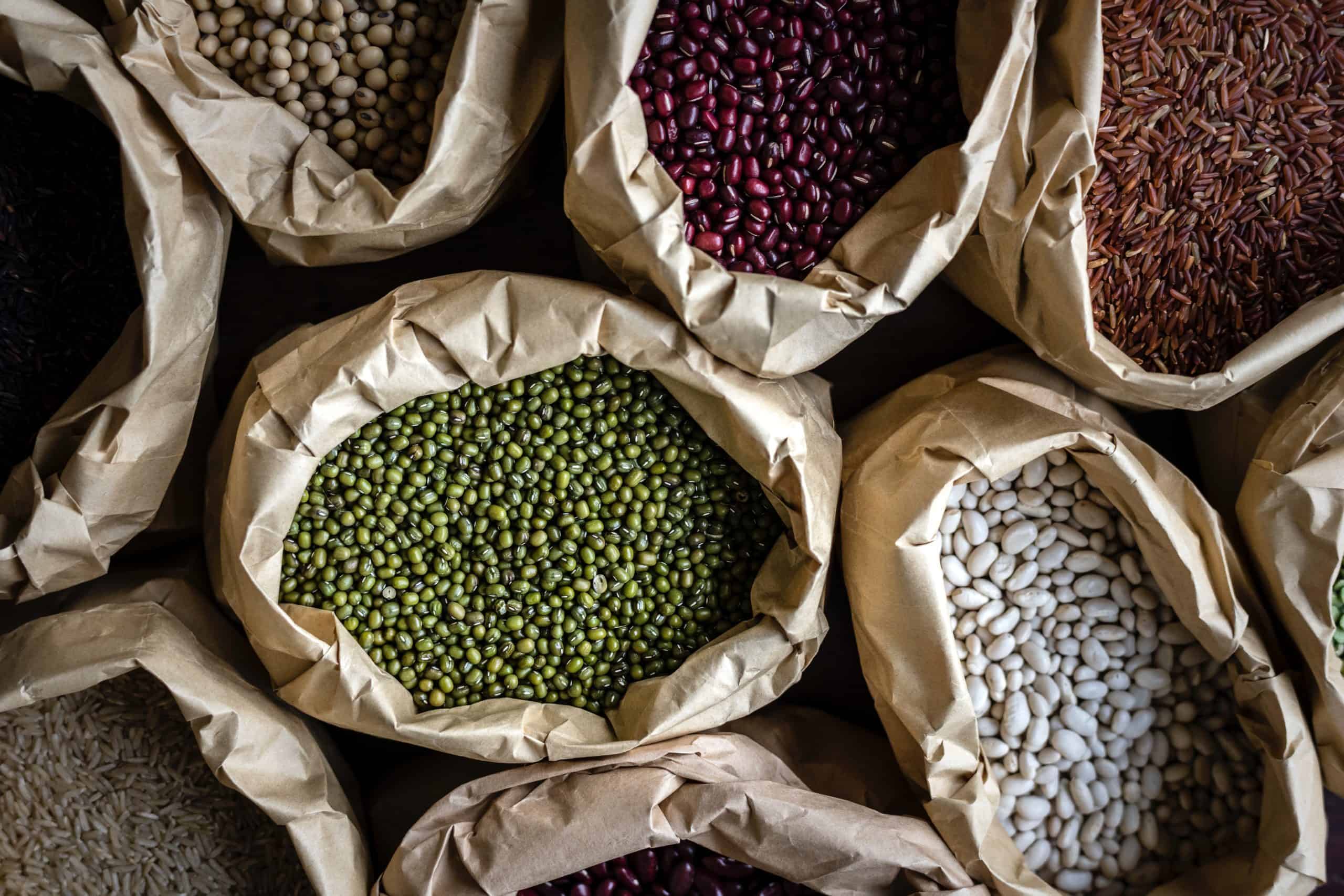Fiber 101: Your Guide to All Things Fiber

When you think of fiber, your memory may flood with images of grandma mixing a hefty spoonful of questionably sawdust-like powder into water. Grandma was onto something, #NoomNerds. Fiber is a real unsung hero with a diverse range of benefits. (No sawdust drink necessary.)
What is fiber?
Fiber is a carbohydrate that your body cannot digest. It runs through your digestive system while staying relatively intact – hence its nickname: “bulk.” Fiber is most prevalent in whole grains, beans, veggies, fruits, and nuts. There are two kinds of fiber: soluble, which dissolves in water; and insoluble, which (you guessed it) does not dissolve in water.
Does it matter if I eat soluble or insoluble?
Both kinds of fiber are great for you. Most whole food sources contain both, though at varying levels. Sometimes, your goals dictate which kind of fiber you focus on. For example, soluble fiber (i.e. oatmeal) forms a gel-like substance which can specifically reduce cholesterol,and thus, your risk of heart disease (1). And, insoluble fiber (i.e. whole wheat) stays bulky and helps to quickly move food through your digestive system, which combats constipation (2). (Yes, we’re talking about your bowels – we’re at that level, right?).
Whoa! What else can fiber do?
When there is bulky fiber in your digestive system, you digest slower. Slower digestion means you feel fuller for longer, making your calorie budget more manageable and weight loss easier. Also, slow digestion steadies your blood sugar levels which prevent cravings – and type 2 diabetes (no big deal) (3).
I’m in! So how much do I need?
The USDA daily fiber recommendation for adults is 33.6 grams for men and 28 grams for women (4). With a balanced diet of whole foods, the average person does not need a supplement – though it’s a-ok if a supplement is the best and/or medically recommended route for you. In true Noom fashion, ease into it! Too much fiber too soon can create tummy troubles. Increase your fiber intake slowly, and find the magic amount that works best for you.
How do I reach that magic number?
Working whole foods into each meal is a surefire way to meet your recommended fiber intake. Consider these 15 fiberful foods, and work with your Noom coach on the best plan to increase your fiber intake.
- Navy beans: 9.6 grams per half cup
- Raspberries: 8 grams per cup
- Split peas: 8 grams per half cup
- Large baked potato with skin: 6.3 grams
- Medium avocado: 9.2 grams
- Whole wheat spaghetti: 6 grams per cup (cooked)
- Medium pear with skin: 5.5 grams
- Quinoa: 5 grams per cup (cooked)
- Chia seeds: 4 grams per tablespoon
- Artichoke: 7.2 grams
- Air-popped popcorn: 3.5 grams per 3 cups
- Collard greens: 7.6 grams per cup (cooked)
- Almonds: 3.5 grams per ounce
- Brussel sprouts: 4 grams per cup
- Barley: 6 grams per cup (cooked)
Ready to step up your fiber game?
Lose weight for good
References:
https://www.ncbi.nlm.nih.gov/pubmed/18937894
https://www.ncbi.nlm.nih.gov/pmc/articles/PMC4291444/
https://www.ncbi.nlm.nih.gov/pubmed/24180564
https://health.gov/dietaryguidelines/2015/resources/2015-2020_Dietary_Guidelines.pdf

